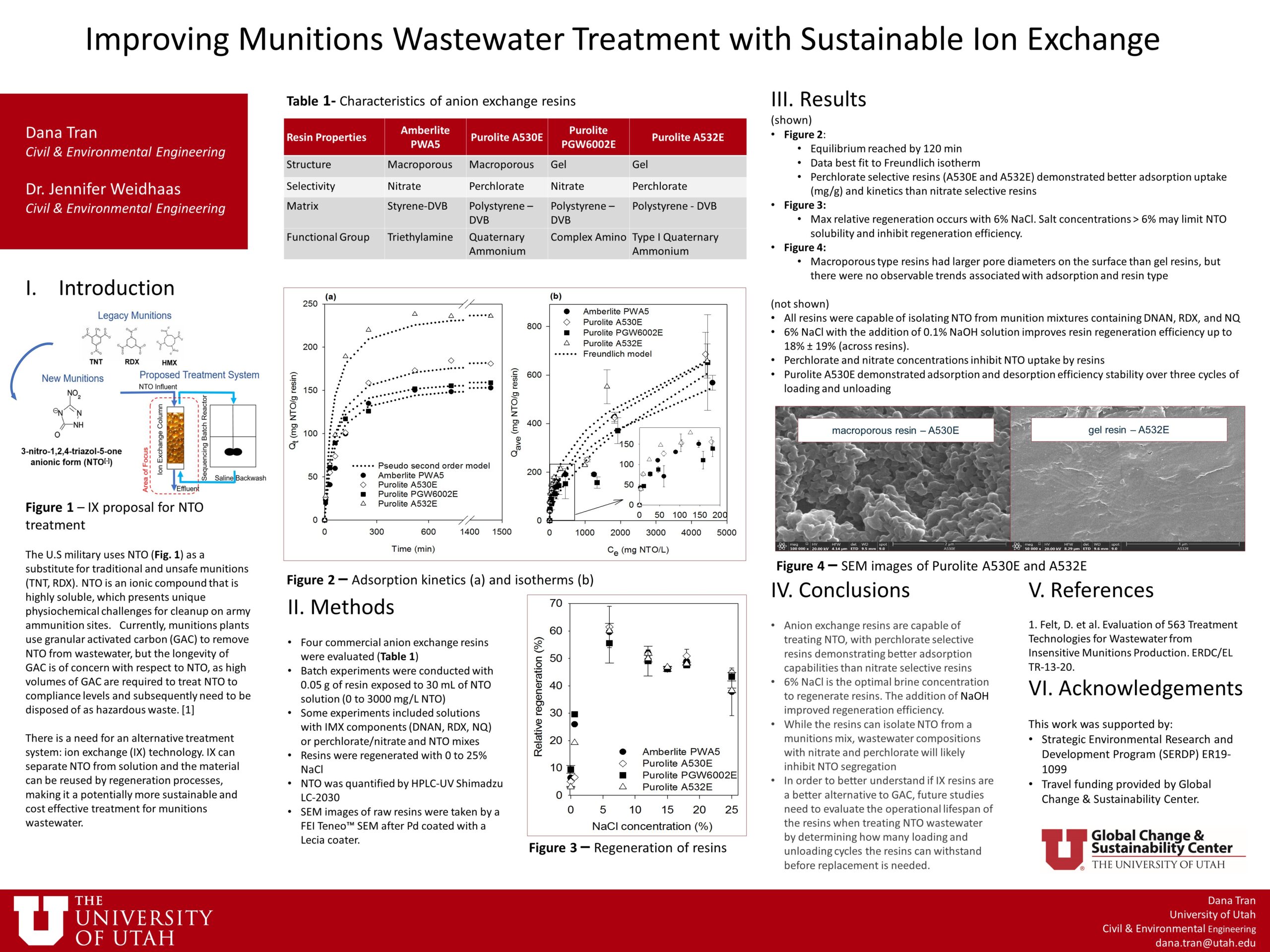Improving Sustainable Munitions Wastewater Treatment
–Dana Tran, Jennifer Weidhaas, Ramesh Goel
[bs_collapse id=”collapse_bb86-afd7″]
[bs_citem title=”Bio” id=”citem_e610-6c22″ parent=”collapse_bb86-afd7″]
I am currently a PhD student in the department of Civil & Environmental Engineering (CVEEN) doing research on explosives removal from munitions wastewater. I completed my B.S. here at the U in 2019, also in CVEEN. I am interested researching emerging contaminants in wastewater and groundwater, especially as maintaining water quality becomes increasingly more difficult, and investigating practical and sustainable solutions that could be used to treat said contaminants.
[/bs_citem]
[bs_citem title=”Abstract” id=”citem_eca8-96a7″ parent=”collapse_bb86-afd7″]
As the complexity of industrial wastewater changes, there is an increasing need for research in water treatment technologies to treat industrial wastewater in cost-effective and sustainable ways. The U.S. military currently utilizes insensitive high explosives (IHEs) containing NTO (3-nitro-1,2,4–triazol–5-one) to supplement conventional and less safe munitions, such as TNT. This work presents information on the use of anion exchange resins for the treatment of NTO contaminated wastewater.
[/bs_citem]
[bs_citem title=”Narrative” id=”citem_780c-0f71″ parent=”collapse_bb86-afd7″]
The munitions industry creates contaminated water containing the compound, NTO. NTO is a negatively charged compound that makes wastewater acidic; NTO is also highly soluble, making it present in wastewater in high concentrations. The traditional material used to treat munitions wastewater, granular activated carbon (GAC) does not treat NTO wastewater in an effective way – the ionic properties of NTO make it less compatible for adsorption to GAC, and large amounts of GAC are required to fully treat NTO wastewater to compliance levels. This research examined an anion exchange resins are an alternative material to GAC. Studies demonstrated the adsorption of NTO to the resins with various wastewater compositions, and the regeneration of the resins with brine, suggesting that anion exchange resins could be reused and potentially have a longer operational lifespan than GAC. Anion exchange resins remove NTO by being composed of fixed and mobile charged ions, where NTO is attracted to the fixed positive ions, and becomes exchanged for a negative mobile ion on the resin.
[/bs_citem]
[/bs_collapse]

